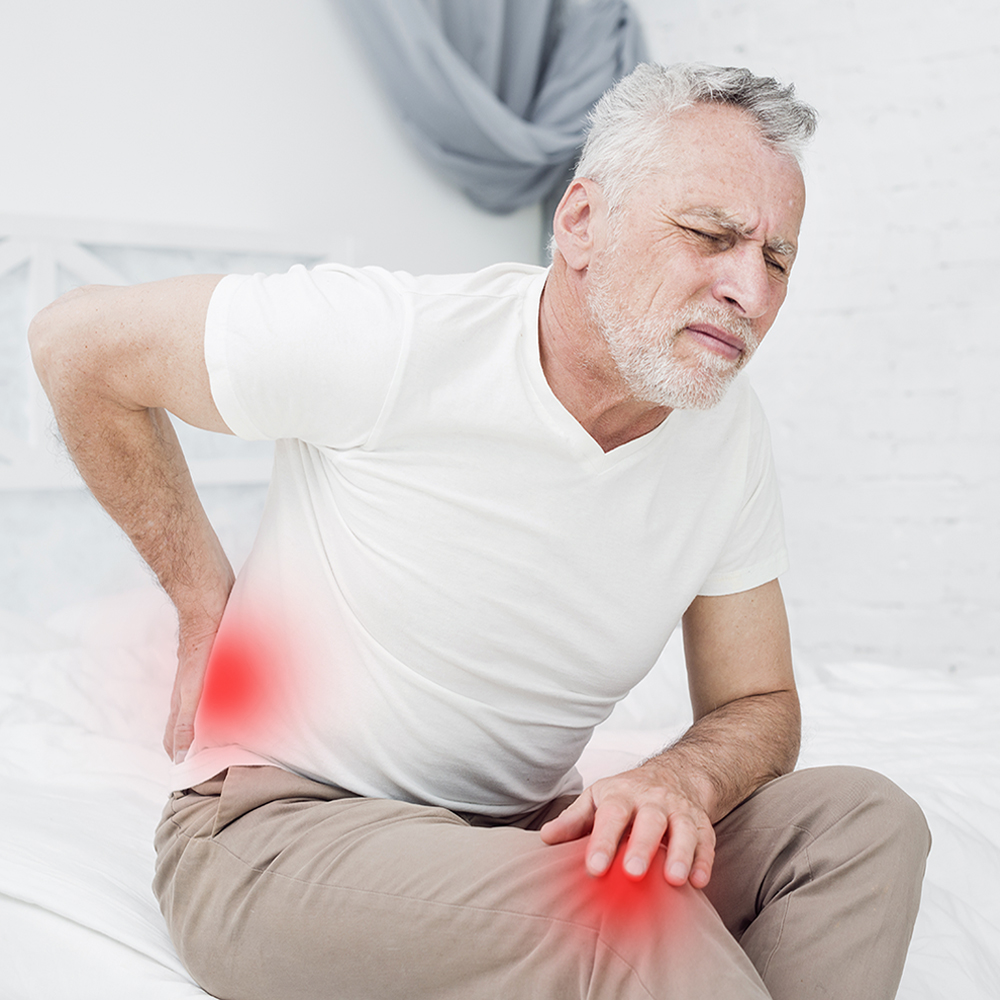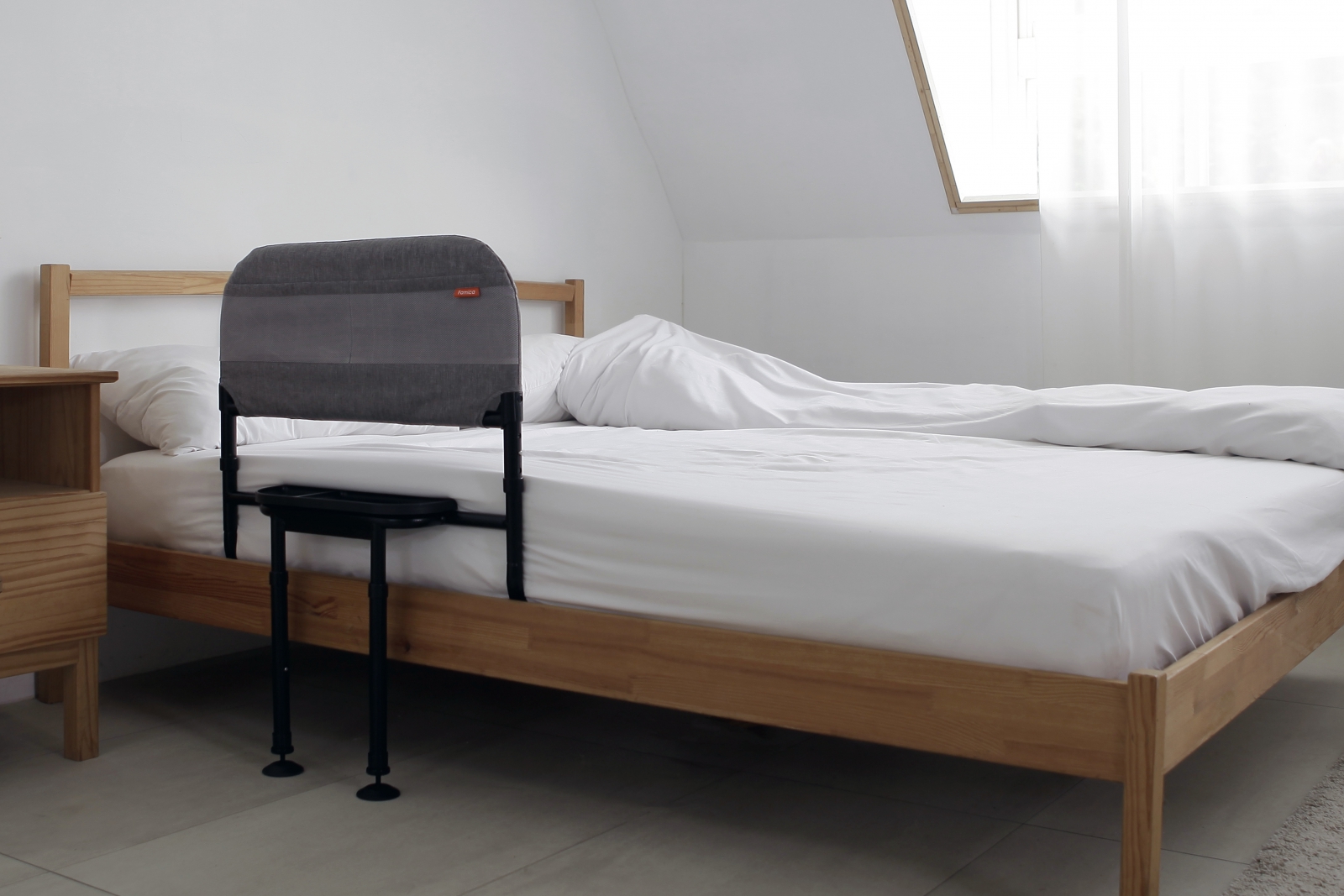Elderly Safety Bed Rails: Safety for Getting In and Out of Bed
Do your elderly family members experience the following issues?
- Weak knees due to aging
- Difficulty turning or moving in bed
- Difficulty getting out of bed
- Back pain and stiffness after getting up

For many seniors, what seems like a routine morning task of sitting up and getting out of bed can require a considerable amount of time and effort. This not only burdens their lower back but also increases the risk of back injuries.
With aging, muscle weakness and limb frailty become common, making the daily process of getting in and out of bed more hazardous than imagined. Additionally, many households, due to space, financial, or seniors' reluctance to use electric beds, may not consider them as an option. Therefore, choosing a reliable and user-friendly bed rail becomes crucial for the safety of seniors.
.png)
A good bed rail should offer the following benefits:
- Protect seniors from accidentally falling out of bed during sleep.
- Assist seniors in adjusting their sleeping positions or turning over in bed.
- Help seniors maintain stability throughout the process of getting in and out of bed.
- Provide support for seniors to stand up and stabilize themselves after getting out of bed, easing their body strain.
- These aids not only provide safety but also promote independence for seniors, significantly reducing the physical and mental strain on caregivers.
So, how do you choose a good bed rail? There are several aspects to consider when selecting a bed rail, such as the fixing method, weight capacity, and handle design.
Fixing method:
There are various fixing methods for bed rails, ranging from simply tucking them under the mattress to drilling into the bed frame. Ideally, choose a bed rail that can be securely fixed to the bed frame without damaging it, ensuring reliability and safety.
Weight capacity:
Unless the senior has an issue with excessive weight, most bed rails have a weight capacity of around 100kg. It's advisable to confirm the product's weight-bearing capacity with the seller before purchasing, and opting for products that have undergone safety testing for added peace of mind.
Handle design:
Aside from preventing seniors from rolling out of bed, the handle design is crucial. Choose a bed rail with a handle that offers a good grip and has an anti-slip design for enhanced safety. Additionally, some handles feature a folding function similar to those found in hospital beds, with options like downward folding or inward-outward folding. It's recommended to choose a bed rail with inward-outward folding handles, as they make it easier for seniors to get up and are convenient for independent operation.

When selecting a suitable bed rail, it's also important to consider whether the mattress firmness and height are suitable for seniors to get up or move in and out of bed. Additionally, developing good habits for getting out of bed can help prevent injuries caused by poor posture over the long term.
A proper technique for getting out of bed involves just four simple steps, which everyone, regardless of age, should learn:
Step 1: While still in bed, bend your knees slightly.
Step 2: Roll onto your side facing the edge of the bed.
Step 3: Slowly extend your lower leg over the edge of the bed and let it hang naturally.
Step 4: Use your hands to support yourself on the bed surface and slowly sit up.
Compared to younger individuals, seniors are more prone to dizziness and instability when getting up due to orthostatic hypotension. Therefore, before getting out of bed, seniors are advised to sit quietly on the edge of the bed for a minute before slowly rising, ensuring they hold onto the bed rail tightly and feel steady before starting to move around.
In fact, the risk of falling is not limited to any specific age group. Those with physical or visual impairments, low blood pressure, anemia, weakness, or cognitive impairments such as dementia are all at high risk of falling. According to surveys, about 68% of falls occur due to momentary lapses in attention rather than a lack of companionship or supervision. It's worth noting that most fall-related injuries occur at night, most commonly when preparing to use the bathroom, followed by getting out of bed or changing positions.
Therefore, developing good habits for getting in and out of bed is crucial for preventing injuries caused by poor posture or falls. Coupled with a suitable bed rail for home use, you can effectively protect yourself and your family members to the fullest extent possible!